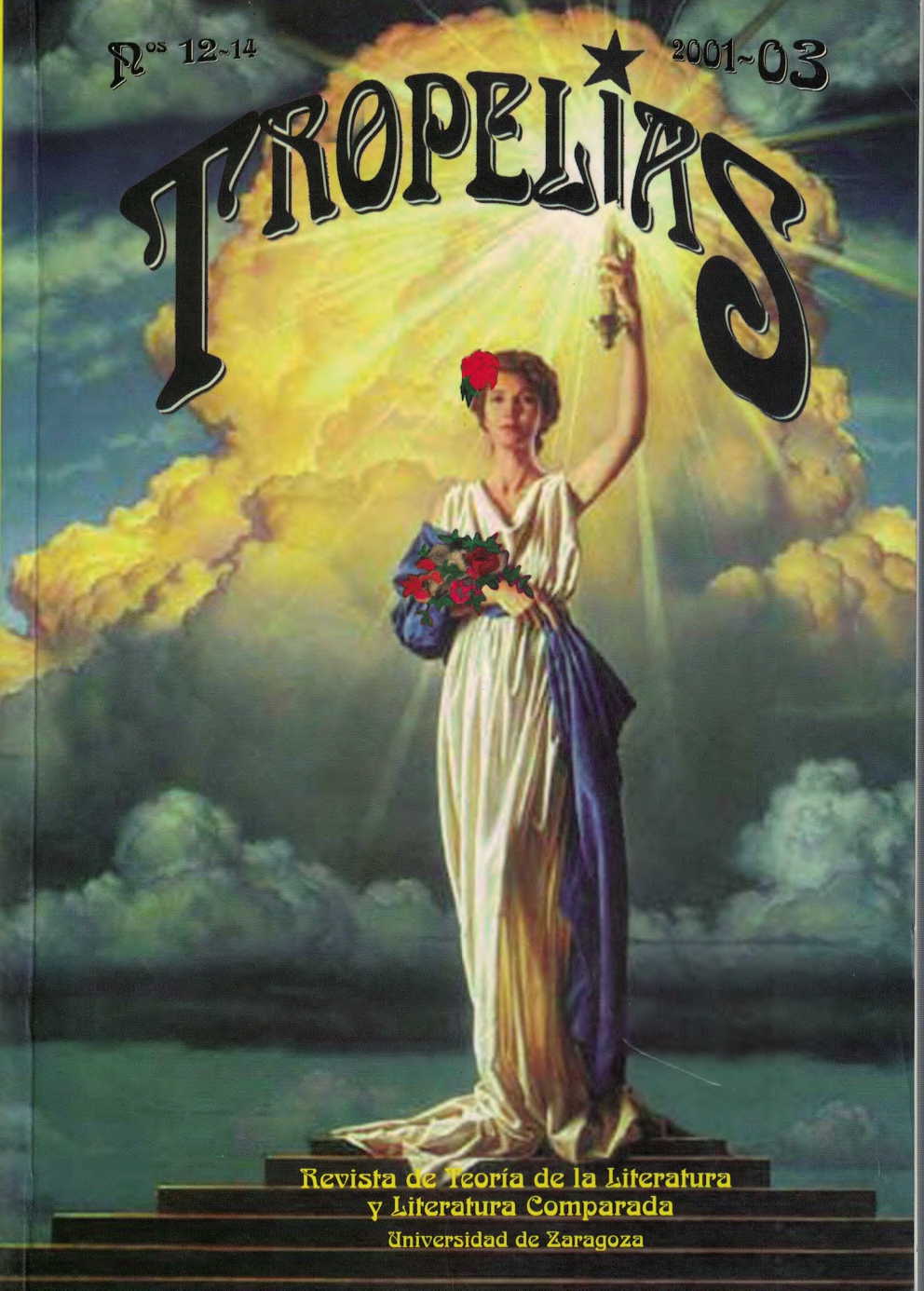Digital heterotopias: simulation and realities in "La sombra cazadora" (Suso de Toro) and "Sueños digitales" (Edmundo Paz Soldán)
DOI:
https://doi.org/10.26754/ojs_tropelias/tropelias.200312-145812Keywords:
Digital heterotopias: simulation and realities in La sombra cazadora (Suso de Toro) and Sueños digitales (Edmundo Paz Soldán)Abstract
La sombra cazadora (De Toro 1995) and Sueños digitales (Paz Soldán 2000) are two recent examples of dystopic novels in Hispanic Literatures. In this article 1 will analyze how these authors depict what Baudrillard calls “le crime parfait”: the assasination of reality. 1 will focus on how the dialectics established between power and mass-media creates “reality” in postmodernity, and will conclude with the moral/social reading implied by both works.
Every distopic narration is direct or indirectly connected to the society within which it is produced, and in which the author wants to denounce a current or future danger. National disenchantment seems to be the origin of both authors” denunciation. Disenchantment with the postrevolutionary Latin American Nation is found in the Bolivian author's text, while the “childish democracy” that emerged from the Spanish Transition is found in the Galician author's text.
Downloads
Downloads
Published
How to Cite
Issue
Section
License
Copyright (c) 2021 Antonio Francisco Pedrós-Gascón

This work is licensed under a Creative Commons Attribution 4.0 International License.
Los artículos enviados a la revista Tropelías deben ser originales e inéditos, no publicados previamente en cualquier soporte. Únicamente se aceptará material publicado total o parcialmente con anterioridad, o que esté en proceso de evaluación en otra revista, si se hace constar la causa de tal duplicación y se facilita la fuente donde ha aparecido dicho artículo.
Las imágenes que se incluyan en los artículos estarán libres de derechos de reproducción y, en caso contrario, los autores deberán presentar los permisos para su publicación y asumir los pagos derivados de ello.
Los artículos y reseñas publicados en la revista Tropelías pueden ser incluidos en repositorios temáticos o institucionales desde el momento de su publicación, sin modificación alguna e indicando claramente su procedencia.


